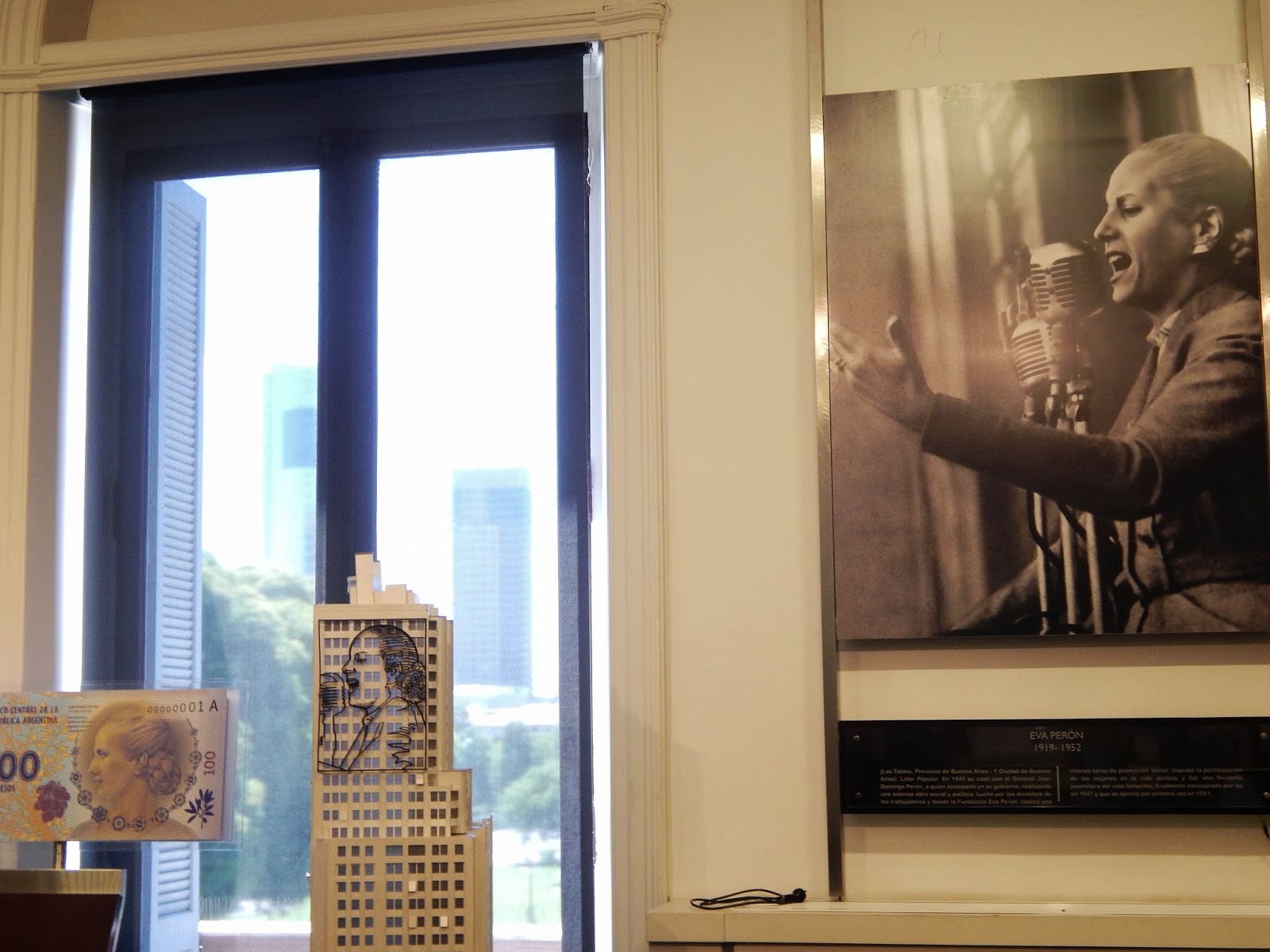
The capital city of Uruguay is Montevideo, a three and a half hour bus ride from Colonia. On the way, we passed many open fields where cows grazed. Uruguay had bad flooding while I was there (remember the stormy pictures from Colonia), meaning there were mudslides in some areas. I was fine, though, as I stayed very close to the coast. Uruguay is home to many nice beaches (particularly in the Punta del Este area), but I didn't get a chance to visit any.
I stayed in the Old City in Montevideo. A part of the old city wall is still standing, as you can see in my picture. A statue of the Uruguayan hero, Jose Gervasio Artigas, is found in the Plaza Independencia above his grave. He fought for the freedom and independence of the Uruguayan people from the Spanish. In 1811, he led a revolution that defeated the Spanish authorities. He is sometimes called the "Father of Uruguay."



The most happening area in town when I arrived was down at the pier, because it was Sunday, and everyone was out fishing. On the way, I passed many buildings with interesting Spanish architecture, that I haven't really seen before.

 When most people talk about the big Carnaval celebration in February, they usually think of Brazil. Bright and colourful costumes, dancing, and parades with big floats are all pictures that come to mind. But Montevideo is also a big party town. Unfortunately, the parades were cancelled because of the rain (the drums they use have a skin on them that is very sensitive to water, so the drums would get wrecked if they were out in the rain). But, I did pass a park that was decorated for the celebration! One positive thing that happened because of the rain, was that the Philharmonic Orchestra held their free concert inside the beautiful Theatre Solis, instead of outside as planned. I had wanted to tour the theatre anyways, but being able to listen to the orchestra was that much more beautiful!
When most people talk about the big Carnaval celebration in February, they usually think of Brazil. Bright and colourful costumes, dancing, and parades with big floats are all pictures that come to mind. But Montevideo is also a big party town. Unfortunately, the parades were cancelled because of the rain (the drums they use have a skin on them that is very sensitive to water, so the drums would get wrecked if they were out in the rain). But, I did pass a park that was decorated for the celebration! One positive thing that happened because of the rain, was that the Philharmonic Orchestra held their free concert inside the beautiful Theatre Solis, instead of outside as planned. I had wanted to tour the theatre anyways, but being able to listen to the orchestra was that much more beautiful!
In Uruguay, the most common foods people eat are barbecued meats, especially 'chorizo' (sausage) and 'chivito' (a sort of hamburger often made of lamb, with an egg on top). There were many food trucks at street corners selling these fast foods. To drink, Uruguayans love mate tea. You press tea leaves into a mug, add hot water, and drink it through a metal straw that filters out the leaves. At a museum I saw some really interestingly designed mate mugs.

Because of their open fields that are great for farming and ranching, Uruguay has a history steeped with cowboy tradition, like Calgary. Here, the cowboys are called 'gauchos' and they traditionally wear floppy hats, similar to a French beret, instead of Western cowboy hats. I saw a few in the mountains in Chile leading groups of horses.

With only a week in Uruguay, I didn't get to see a lot. But the time I spent there was very enjoyable. I found it to be a beautiful country with very friendly, laid-back people. Every day I find that my Spanish is improving a little bit more, and everyone I spoke with in Uruguay was really patient with me when I tried to communicate. I was sad to leave, but I had a flight booked already to head back to Argentina. This time, I am moving South, to the southest tip of South America, to be exact!

















